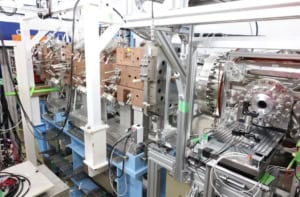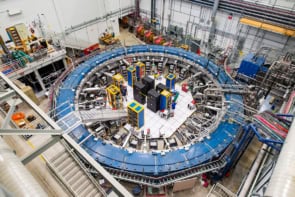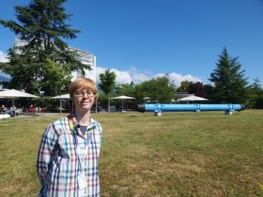By Hamish Johnston
This month marks the 60th anniversary of CERN and to kick-off our coverage here at physicsworld.com, I’m highlighting an essay on the future of collider physics that has just been written by Nobel laureate Burton Richter called “High energy colliding beams; what is their future?“.

Richter shared his 1976 Nobel prize with Samuel Ting for their independent discoveries of the J/ψ meson. He knows his particle colliders, having helped to design and build the world’s first collider in the late 1950s at Stanford University and later directing the Stanford Linear Accelerator Center for 15 years.
Richter believes that the international community is not facing up to tough decisions that must be made about what to do when the Large Hadron Collider (LHC) is retired sometime in the early 2030s. He thinks that “the perspective of one of the old guys might be useful”.
Planning the next huge collider involves the co-operation of three main groups of physicists: those who design and build the accelerators; those who design and build the experiments; and the theoretical physicists who work out what the experiments are looking for. Richter thinks that this is not going well at the moment.
“In this discussion I see too much theoretical desperation caused by the so-far unsuccessful hunt for what is beyond the Standard Model, and too little of the necessary interaction of the accelerator, experimenter and theory communities necessary for a scientific and engineering success,” he laments.
This desperation has arisen because of the failure of physicists to see any hints of supersymmetry or other physics beyond the Standard Model in the 8 TeV proton collisions at the LHC. Richter seems to suggest that this lack of results is driving theorists (and I suppose some experimentalists as well) to call for collisions at much higher energies.
The LHC could eventually run at 30 TeV, something that would require rebuilding much of the collider within its current 27 km tunnel. However, Richter points out that this option is much less talked about than the much more expensive option of building a colossal 100 km-circumference collider at CERN that would operate at 100 TeV.
Richter points out that little thought seems to have been given – at least so far – as to whether enough data could be wrung from such a collider to make it worthwhile. The problem is that as the collision energy increases, the probability that collisions will occur falls as one over the energy squared. Fewer collisions mean that detectors will have to be much more sensitive in order to make any discoveries at all.
According to Richter, accelerator, experimental and theoretical physicists have yet to have serious discussions about these issues, although he points out that CERN is now setting up a group to explore this issue.
“It is about time someone did so, and a serious discussion on its physics reach should be the first order of business,” he writes, adding that “detector R&D will be as important in the long run as machine R&D”.
In his essay, Richter also explains why the current split over which accelerator technology should be used for the future International Linear Collider is all too familiar to those who worked on the failed Superconducting Super Collider (SSC) project. He also points out the benefits of how funds are managed at CERN when compared with some other international projects.
If you are interested in the future of particle physics, Richter’s article is an essential read.



